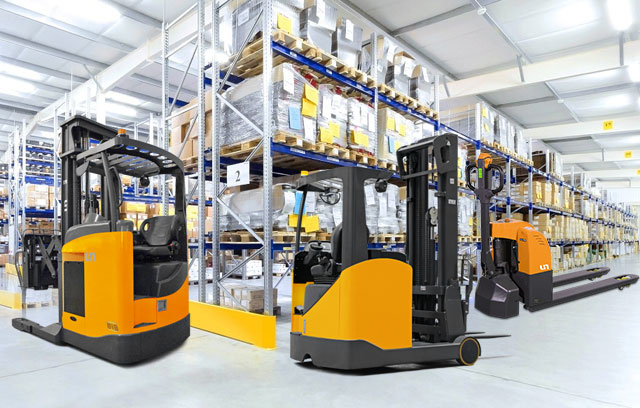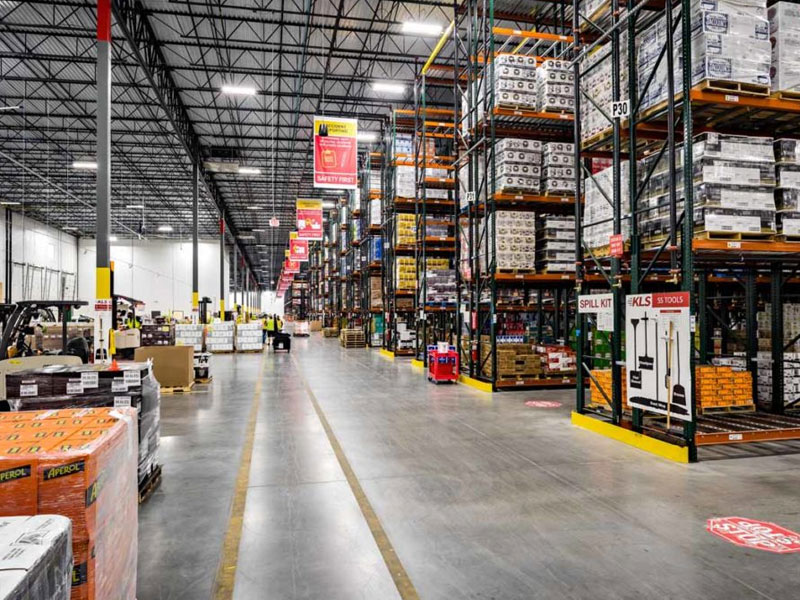Your choice of power source for the equipment is defined primarily by the forklift’s technical specifications. As the users of diesel- or propane-powered Class 4 and 5 sit-down forklifts continue to convert to Class 1 electric, the vast majority of lift trucks today are battery powered. Durable and high capacity Li-ion batteries have become available for even the most demanding applications handling heavy and bulky loads like steel, lumber, paper, and beverages.
The following are the main specs you need to look at:
1. Battery voltage (V) and capacity (Ah)
There are several standard voltage options (12V, 24V, 36V, 48V, 72V, 80V) and different capacity options (from 100Ah to 1000Ah and higher) available for various lift truck models.
2. Battery compartment size
The dimensions of a forklift’s battery compartment are often unique, so it is crucial to find a perfect and precise fit. It is also important to consider the cable connector type and its location on the battery and a truck.
3. Battery weight and counter-weight
Different forklift models have different recommended battery weight requirements that you should consider while making your choice. An additional counterweight is added to a battery intended for use in applications with heavy loads.
4. Li-ion vs. lead-acid forklift batteries in different types of electric forklifts (Classes I, II, and III)
Lithium batteries are best suited for Class I, II, and III forklifts and other off-road electric vehicles, like sweepers and scrubbers, tugs, golf carts, etc. The reasons? Triple the lifespan of lead-acid technology, excellent safety, minimal maintenance, stable operation at low or high temperatures, and high energy capacity in kWh.
LFP (Lithium Iron Phosphate) and NMC (Lithium-Manganese-Cobalt-Oxide) batteries are both used in electric forklifts. The recent tests of lithium battery types at Sandia Laboratories show that LFP batteries actually last longer and are more reliable than NMC.
NMC and NCA (Lithium-Cobalt-Nickel-Oxide) types of lithium batteries are more commonly used in passenger EVs and electronics due to their lower overall weight and higher energy density per kilogram. NMC industrial batteries are used by some OEM manufacturers (Calmar, for example) in construction equipment like cranes and excavators.
Until recently, lead-acid batteries have been widely used in all types of electric forklift trucks. TPPL is the newer version of such batteries. It has higher efficiency and higher charging speed, but only compared to traditional flooded lead-acid technology or sealed lead-acid batteries, like absorbent glass mat (AGM).
In most cases, lithium-ion batteries are a much more economical and efficient choice for industrial applications than any lead-acid battery, including AGM or TPPL batteries.
5. Forklift-battery communication
A Controller Area Network (CAN bus) allows microcontrollers and devices to communicate with each other's applications without a host computer. Not all battery brands are fully integrated with all forklift models through the CAN bus. Then there is the option of using an external Battery Discharge Indicator (BDI), which provides the operator with visual and audio signals of the battery’s state of charge and readiness to work.











 中文简体
中文简体 عربى
عربى Español
Español














